TOP-1000 largest companies in Yekaterinburg
Information agency Credinform presents a review of the activity trends of the companies in Yekaterinburg.
The largest companies of the city (TOP-1000) in terms of annual revenue were selected for the analysis according to the data from the Statistical Register and the Federal Tax Service for the latest available accounting periods (2016 – 2020). The selection of companies and the analysis were based on the data from the Information and Analytical system Globas.
Net assets are total assets less total liabilities. This indicator reflects the real value of the property of an enterprise. When the company’s debt exceeds the value of its property, the indicator is considered negative (insufficiency of property).
The largest company in term of net assets is JSC FEDERAL FREIGHT, INN 6659209750, Sverdlovsk region, engaged in renting and leasing of railway transport and equipment. In 2020, net assets value of the enterprise amounted to almost 97 billion RUB.
The lowest net assets value among TOP-1000 was recorded for JSC RUSSIAN COPPER COMPANY, INN 6670061296, Sverdlovsk region, engaged in treatment of waste and non-ferrous scrap. In 2020, insufficiency of property of the enterprise was indicated in negative value of more than -8 billion RUB.
During the five-year period, the average net assets values of TOP-1000 have a trend to increase, with the decreasing growth rates (Picture 1).
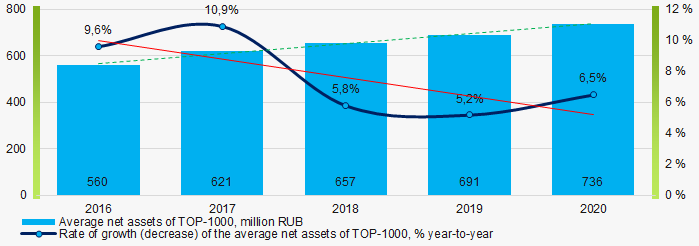 Picture 1. Change in average net assets value in TOP-1000 in 2016 - 2020
Picture 1. Change in average net assets value in TOP-1000 in 2016 - 2020The shares of TOP-1000 companies with insufficient property had positive trend to decrease during last 5 years (Picture 2).
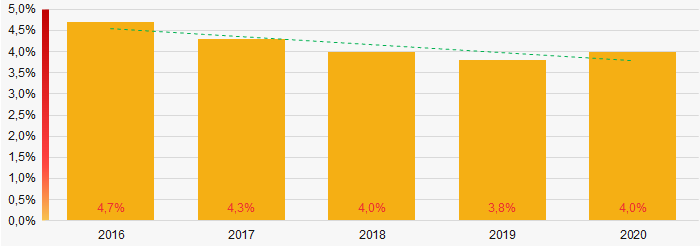 Picture 2. Shares of TOP-1000 companies with insufficient property in 2016 - 2020
Picture 2. Shares of TOP-1000 companies with insufficient property in 2016 - 2020Sales revenue
The revenue volume of TOP-10 companies amounted to 31% of the total revenue of TOP-1000 in 2020 (Picture 3). It gives evidence to a relatively high level of the capital concentration among companies in Yekaterinburg.
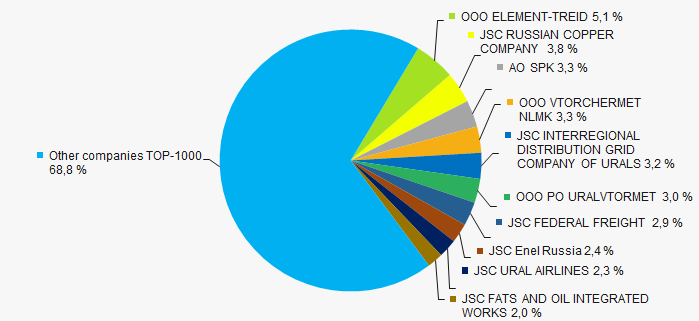 Picture 3. Shares of TOP-10 companies in the total revenue of TOP-1000 in 2020
Picture 3. Shares of TOP-10 companies in the total revenue of TOP-1000 in 2020In general, there is a trend to increase in revenue with decreasing growth rates (Picture 4).
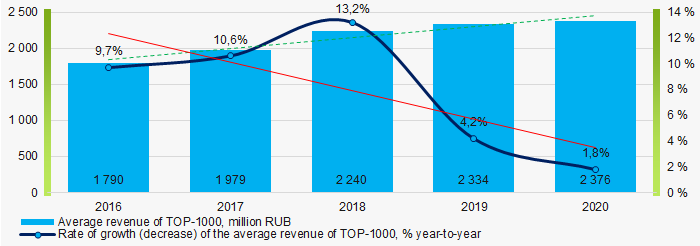 Picture 4. Change in average industry revenue of TOP-1000 companies in 2016– 2020
Picture 4. Change in average industry revenue of TOP-1000 companies in 2016– 2020Profit and loss
The largest TOP-1000 company in term of net profit in 2020 is AO SINARA GROUP, INN 6658252583, engaged in renting and operating of own or leased real estate. The company’s profit amounted to almost 14 billion RUB. During five-year period, the average profit figures and its growth rates of TOP-1000 companies have a trend to decrease (Picture 5).
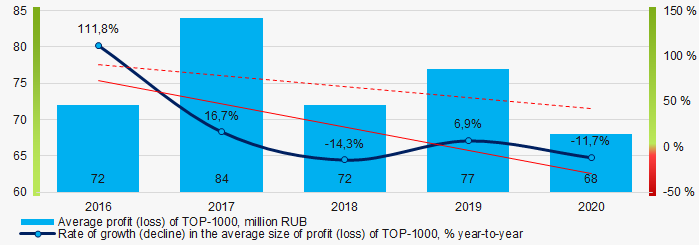 Picture 5. Change in average profit (loss) of TOP-1000 companies in 2016- 2020
Picture 5. Change in average profit (loss) of TOP-1000 companies in 2016- 2020During five-year period, the average net profit figures of TOP-1000 companies were increasing, whereas the average net loss was increasing, as well. (Picture 6).
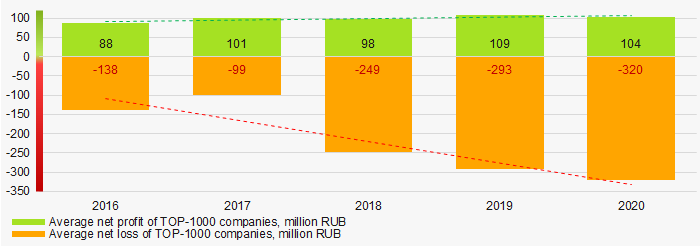 Picture 6. Change in average net profit and net loss of ТОP-1000 companies in 2016 – 2020
Picture 6. Change in average net profit and net loss of ТОP-1000 companies in 2016 – 2020Key financial ratios
During five-year period, the average values of the current liquidity ratio of TOP-1000 companies were above the recommended one – from 1,0 to 2,0, with a trend to increase. (Picture 7).
Current liquidity ratio (current assets to short-term liabilities) shows the sufficiency of company’s assets to repay on short-term liabilities.
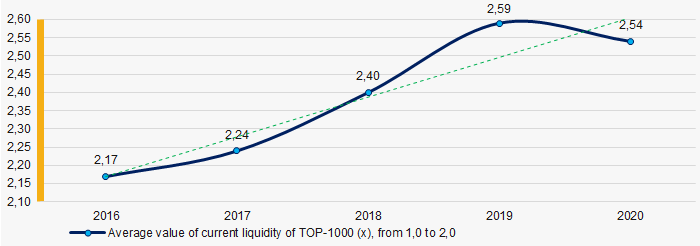 Picture 7. Change in average values of current liquidity ratio of TOP-1000 in 2016 – 2020
Picture 7. Change in average values of current liquidity ratio of TOP-1000 in 2016 – 2020During five years, the average ROI values of TOP-1000 companies had a trend to decrease (Picture 8).
ROI ratio is calculated as net profit to sum of shareholders equity and long-term liabilities, and shows the return of equity involved in commercial activities and long-term borrowed funds.
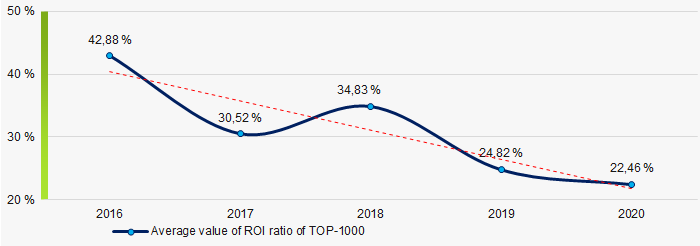 Picture 8. Change in average values of ROI ratio of TOP-1000 in 2016 – 2020
Picture 8. Change in average values of ROI ratio of TOP-1000 in 2016 – 2020Assets turnover ratio is the ratio of sales revenue and company’s average total assets for a period. It characterizes the effectiveness of using of all available resources, regardless the source of their attraction. The ratio shows how many times per year the full cycle of production and circulation is performed, generating the corresponding effect in the form of profit.
During the five-year period, there was a trend to decrease of this ratio (Picture 9).
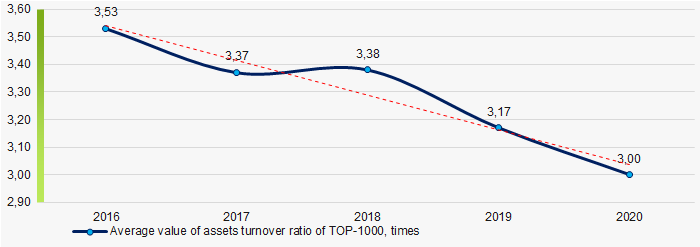 Picture 9. Change in average values of assets turnover ratio of TOP-1000 companies in 2016 – 2020
Picture 9. Change in average values of assets turnover ratio of TOP-1000 companies in 2016 – 2020Small enterprises
68% companies of TOP-1000 are registered in the Register of small and medium-sized enterprises of the Federal Tax Service of the Russian Federation. However, their share in total revenue of TOP-1000 in 2020 amounted to more than 21%, which is a little higher than the average country values in 2018 - 2019 (Picture 10).
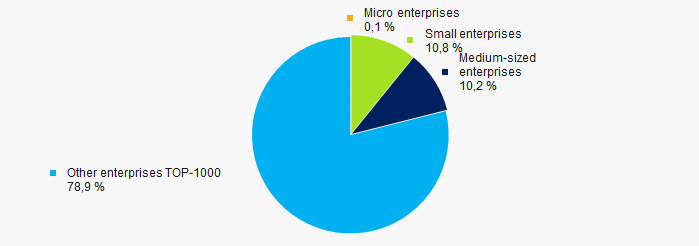 Picture 10. Shares of small and medium-sized enterprises in TOP-1000
Picture 10. Shares of small and medium-sized enterprises in TOP-1000Financial position score
According to the assessment, the financial position of most of TOP-1000 companies is above average (Picture 11).
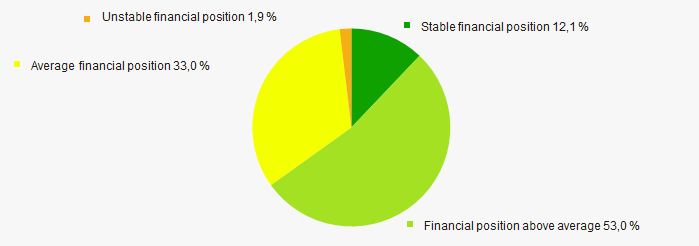 Picture 11. Distribution of TOP-1000 companies by financial position score
Picture 11. Distribution of TOP-1000 companies by financial position scoreSolvency index Globas
Most of TOP-1000 companies got Superior / High and Strong / Medium index Globas. This fact shows their ability to meet their obligations fully and by the due date (Picture 12).
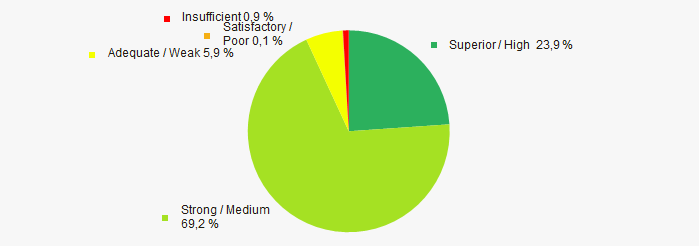 Picture 12. Distribution of TOP-1000 companies by solvency index Globas
Picture 12. Distribution of TOP-1000 companies by solvency index GlobasConclusion
Complex assessment of activity of the largest companies in Yekaterinburg, taking into account the main indexes, financial ratios and indicators, demonstrates the prevalence of positive trends in their activity in 2016 – 2020 (Table 1).
| Trends and evaluation factors | Relative share of factor, % |
| Dynamics of the average net assets value |  10 10 |
| Rate of growth (decline) in the average size of net assets |  -10 -10 |
| Increase / decrease in the share of enterprises with negative values of net assets |  10 10 |
| Level of capital concentration (monopolization) |  5 5 |
| Dynamics of the average revenue |  10 10 |
| Rate of growth (decline) in the average size of revenue |  -10 -10 |
| Dynamics of the average profit (loss) |  -10 -10 |
| Rate of growth (decline) in the average size of profit (loss) |  -10 -10 |
| Growth / decline in average values of net profit |  10 10 |
| Growth / decline in average values of net loss |  -10 -10 |
| Increase / decrease in average values of current liquidity ratio |  5 5 |
| Increase / decrease in average values of return on investment ratio |  -10 -10 |
| Increase / decrease in average values of asset turnover ratio, times |  -10 -10 |
| Share of small and medium-sized businesses in terms of revenue being more than 20% |  10 10 |
| Financial position (the largest share) |  10 10 |
| Solvency index Globas (the largest share) |  10 10 |
| Average value of relative share of factors |  0,6 0,6 |
 positive trend (factor),
positive trend (factor),  negative trend (factor)
negative trend (factor)
Trends in financial intermediation
Information agency Credinform represents a review of activity trends among the largest companies engaged in provision of the auxiliary financial services.
The companies with the highest annual revenue (TOP 1000) engaged in financial intermediation - trading on stock, commodity, currency, currency and stock exchanges, brokerage, fund management, etc. - were selected for the ranking, according to the data from the Statistical Register and the Federal Tax Service for the latest available periods (2011 – 2020). The selection and analysis of companies were based on the data of the Information and Analytical system Globas.
Net assets are total assets less total liabilities. This indicator reflects the real value of the property of an enterprise. When the company’s debt exceeds the value of its property, the indicator is considered negative (insufficiency of property).
The largest company in term of net assets is ASSOCIATION OF FINANCIAL MARKET PARTICIPANTS NON-PROFIT PARTNERSHIP OF FINANCIAL MARKET DEVELOPMENT RTS, INN 7712095220, Moscow, activities to ensure the efficiency of the functioning of financial markets. In 2020, net assets value of the company exceeded 16 billion RUB.
The lowest net assets value among TOP 1000 belonged to LLC RVVT-FINANS, INN 7703662787, Moscow, activities auxiliary to financial services, excluding insurance and retirement benefits; the legal entity is in liquidation since 25.08.2016. In 2020, insufficiency of property of the enterprise was indicated in negative value of -7 billion RUB.
Covering the ten-year period, the average net assets values of TOP 100 have a trend to increase (Picture 1).
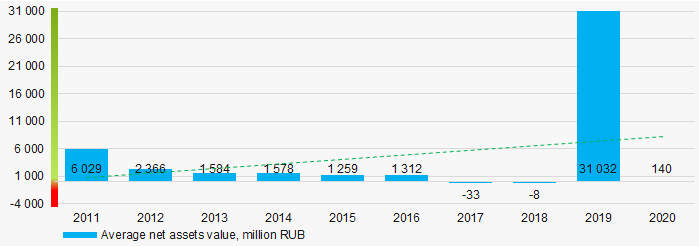 Picture 1. Change in industry average net assets value in 2011 – 2020
Picture 1. Change in industry average net assets value in 2011 – 2020Over the past five years, the share of companies with insufficient property had no trend to decrease (Picture 2).
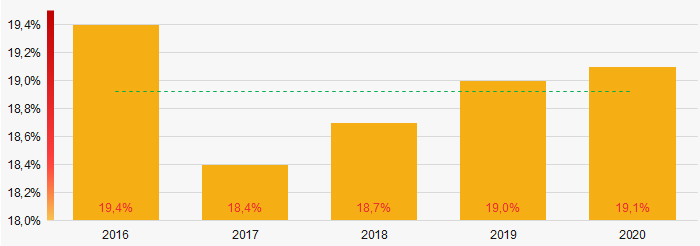 Picture 2. Shares of TOP 1000 companies with negative net assets value in 2016-2020
Picture 2. Shares of TOP 1000 companies with negative net assets value in 2016-2020Sales revenue
In 2020, the revenue volume of ten largest companies exceeded 53% of total TOP 1000 revenue (Picture 3). This is indicative of a high level of monopolization in the industry.
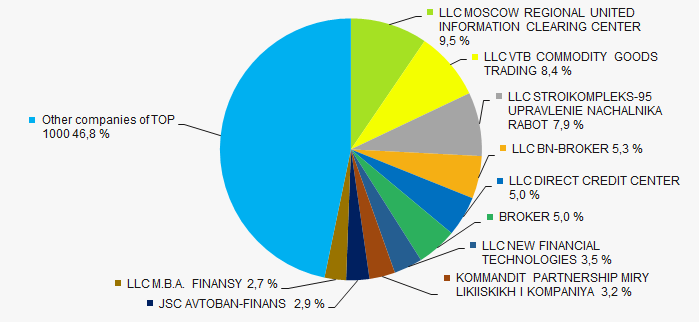 Picture 3. The share of TOP 10 companies in total 2020 revenue of TOP 1000
Picture 3. The share of TOP 10 companies in total 2020 revenue of TOP 1000 In general, there is a trend to decrease in revenue and its growth rate (Picture 4).
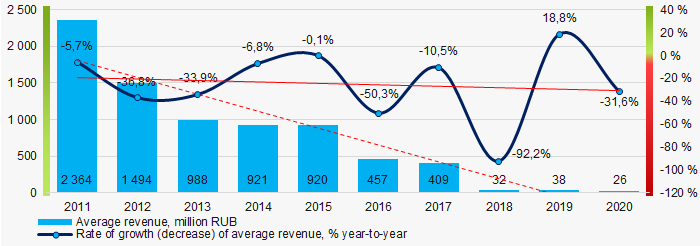 Picture 4. Change in industry average values of revenue in 2011 – 2020
Picture 4. Change in industry average values of revenue in 2011 – 2020Profit and loss
In 2020, the largest organization in term of net profit is JSC RUSAGRO GROUP, INN 5003077160, Tambov region, securities management. The company’s profit was near 12 billion RUB.
Covering the ten-year period, there is a trend to decrease in average net profit (Picture 5).
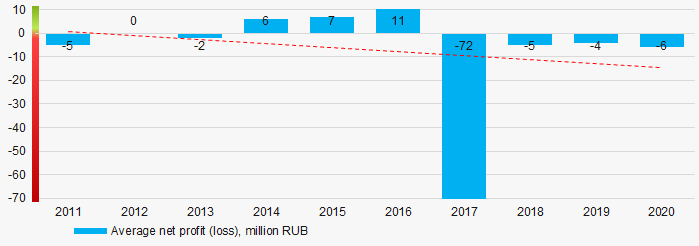 Picture 5. Change in industry average net profit (loss) values in 2011 – 2020
Picture 5. Change in industry average net profit (loss) values in 2011 – 2020For the five-year period, the average net profit values of TOP 1000 have the increasing trend with the increasing net loss (Picture 6).
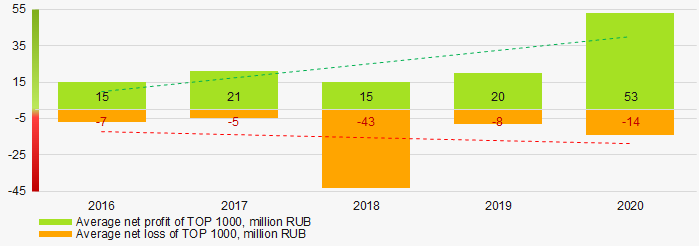 Picture 6. Change in average net profit and net loss of ТОP in 2016 - 2020
Picture 6. Change in average net profit and net loss of ТОP in 2016 - 2020Key financial ratios
Covering the ten-year period, the average values of the current liquidity ratio were mainly within the recommended one - from 1,0 to 2,0 with a trend to decrease (Picture 7).
Current liquidity ratio (current assets to short-term liabilities) shows the sufficiency of company’s assets to repay on short-term liabilities.
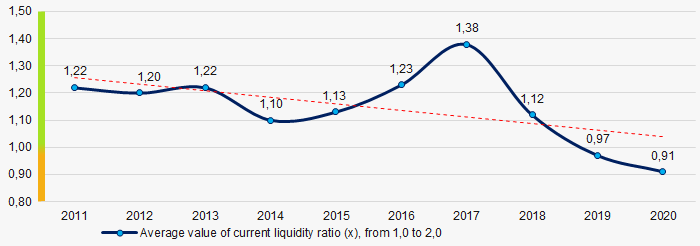 Picture 7. Change in industry average values of current liquidity ratio in 2011 – 2020
Picture 7. Change in industry average values of current liquidity ratio in 2011 – 2020 Covering the ten-year period, the average values of ROI ratio had a trend to increase basically due to the results achieved in 2017-2018 (Picture 8).
ROI ratio is calculated as net profit to sum of shareholders equity and long-term liabilities, and shows the return of equity involved in commercial activities and long-term borrowed funds.
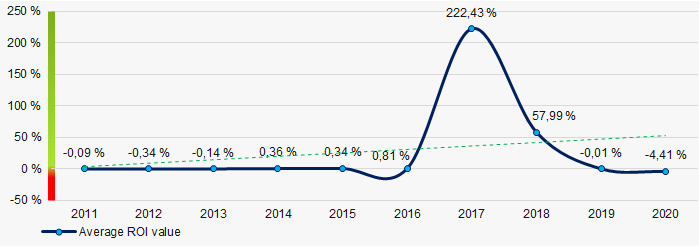 Picture 8. Change in industry average values of ROI ratio in 2011 - 2020
Picture 8. Change in industry average values of ROI ratio in 2011 - 2020Assets turnover ratio is the ratio of sales revenue and company’s average total assets for a period. It characterizes the effectiveness of using of all available resources, regardless the source of their attraction. The ratio shows how many times per year the full cycle of production and circulation is performed, generating the corresponding effect in the form of profit.
Covering the ten-year period, business activity ratio demonstrated the decreasing trend (Picture 9).
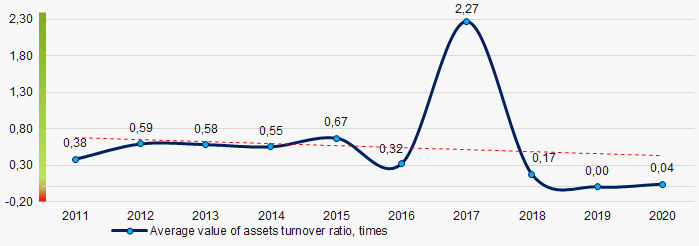 Picture 9. Change in average values of assets turnover ratio in 2011 – 2020
Picture 9. Change in average values of assets turnover ratio in 2011 – 2020Small business
88% of companies included in TOP 1000 are registered in the Register of small and medium-sized enterprises of the Federal Tax Service of the Russian Federation. In 2020, their share in total revenue of TOP 1000 is more than 35%, much higher than the average country values in 2018-2019 (Picture 10).
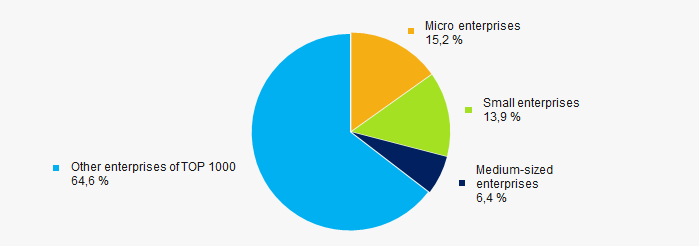 Picture 10. Shares of small and medium-sized enterprises in TOP 1000
Picture 10. Shares of small and medium-sized enterprises in TOP 1000Main regions of activity
Companies of TOP 1000 are registered in 77 regions of Russia, and unequally located across the country. Over 65% of companies largest by total 2020 revenue are located in Moscow and Moscow region (Picture 11).
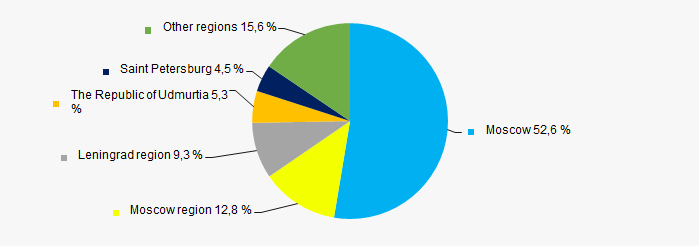 Picture 11. Distribution of TOP 1000 revenue by regions of Russia
Picture 11. Distribution of TOP 1000 revenue by regions of RussiaFinancial position score
Assessment of the financial position of TOP 1000 companies shows that the majority of them have average financial position (Picture 12).
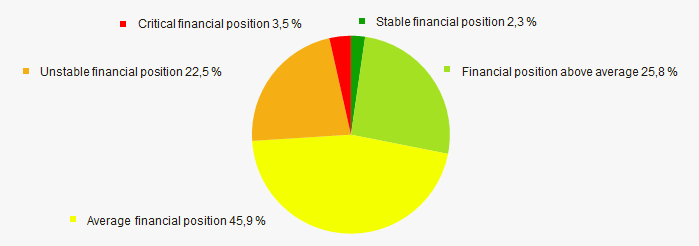 Picture 12. Distribution of TOP 1000 companies by financial position score
Picture 12. Distribution of TOP 1000 companies by financial position scoreSolvency index Globas
Most of TOP 1000 companies got Adequate / Weak indexes Globas. This fact shows their limited ability to meet their obligations fully (Picture 13).
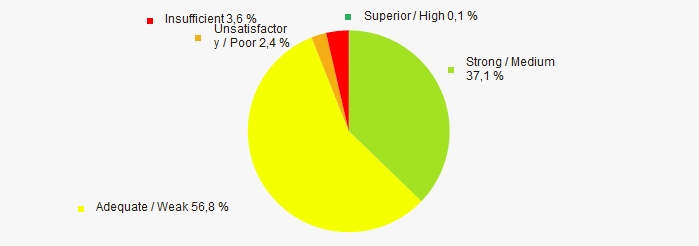 Picture 13. Distribution of TOP 1000 companies by solvency index Globas
Picture 13. Distribution of TOP 1000 companies by solvency index GlobasConclusion
Complex assessment of activity of companies engaged in activities auxiliary to financial services, taking into account the main indexes, financial ratios and indicators, demonstrates the prevalence of negative trends in 2011 - 2020 (Table 1).
| Trends and evaluation factors | Relative share of factors, % |
| Dynamics of the average net assets value |  5 5 |
| Rate of growth (decrease) in the share of companies with negative net assets |  5 5 |
| Level of competition / monopolization |  -10 -10 |
| Dynamics of the average revenue |  -10 -10 |
| Rate of growth (decrease) in the average size of revenue |  -10 -10 |
| Dynamics of the average profit (loss) |  -10 -10 |
| Growth / decline in average values of companies’ net profit |  10 10 |
| Growth / decline in average values of companies’ net loss |  -10 -10 |
| Increase / decrease in average values of total liquidity ratio |  -5 -5 |
| Increase / decrease in average values of return on investment ratio |  5 5 |
| Increase / decrease in average values of asset turnover ratio, times |  -10 -10 |
| Share of small and medium-sized businesses in terms of revenue being more than 20% |  10 10 |
| Regional concentration |  -10 -10 |
| Financial position (the largest share) |  5 5 |
| Solvency index Globas (the largest share) |  5 5 |
| Average value of relative share of factors |  -2,0 -2,0 |
 positive trend (factor),
positive trend (factor),  negative trend (factor)
negative trend (factor)